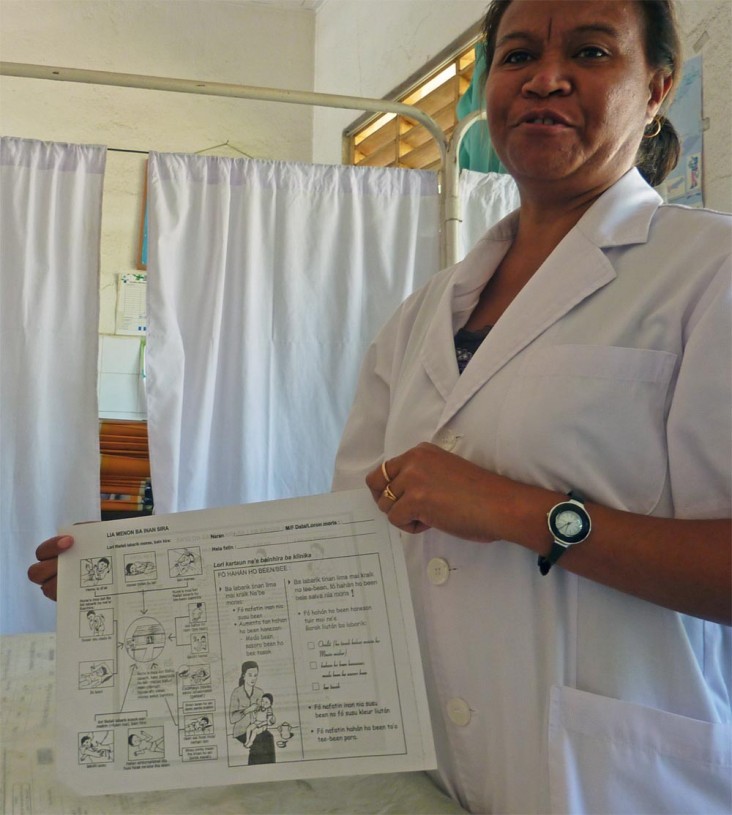
Although they are largely preventable, pneumonia, diarrhea, malaria and measles are the main diseases that kill children under age five in Timor-Leste, which has among the highest child mortality rates in southeast Asia.
To improve the diagnosis and treatment of sick children, USAID lends support to a project working to improve skills and health services at all levels within the Ministry of Health.
Through the Timor-Leste Integrated Health Assistance project (known locally as TAIS), USAID has taught health workers to assess, classify, and treat the most common types of childhood illnesses. Last year, more than 15,000 children were treated for pneumonia by USAID-trained health workers.
"I received training on how to recognize whether the symptoms are just a cold or whether it is something more serious like pneumonia - whether I should give antibiotics or advise the parent to give their child a home remedy," said nurse Graciana de Jesus Martins, who works at the district health center in Gleno, the capital of the mountainous district of Ermera.
Martins, who has received training from TAIS since 2008, pulled a stop-watch from her desk to demonstrate how to measure a child's heartbeat to help recognize a symptom of pneumonia. If the symptoms don't indicate a serious illness, she prescribes a home brew. "If a child has a cold or sore throat and it's not more serious, I recommend a mixture of honey and lime."
Ministry records show that after the TAIS training in Ermera district, 88 percent of children who see a nurse trained in integrated care get the correct treatment the first time.
This and other USAID health projects have helped Timor-Leste reduce its child and infant mortality rates significantly since the Demographic and Health Survey in 2003. In the most recent survey (2009-2010), the mortality rate dropped from 83 deaths per 1,000 births to 64 for children under five; and from 60 per 1,000 births to 45 for infants under a year old.
Bonifacio Dos Reis, the Ermera district health director, said that one of the most important achievements of the USAID project is that it has taught nurses and doctors to recognize illnesses and offer appropriate care. "TAIS has contributed to the reduction of the infant mortality rate dramatically. We've made big progress in Ermera," he said.







Comment
Make a general inquiry or suggest an improvement.